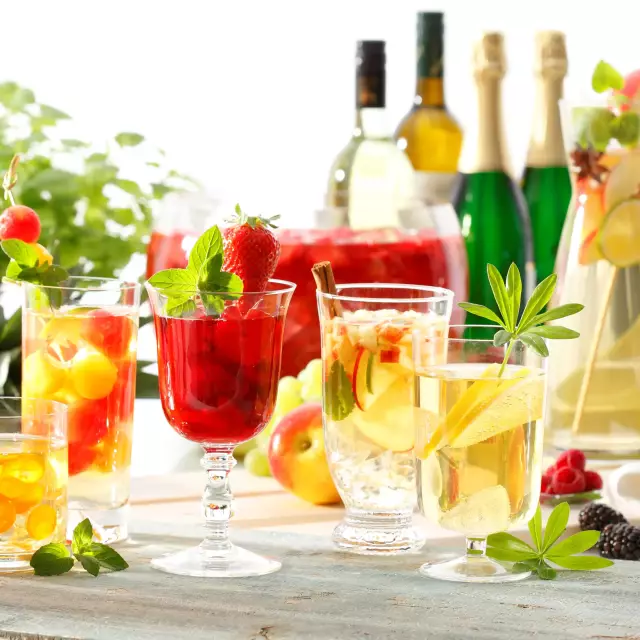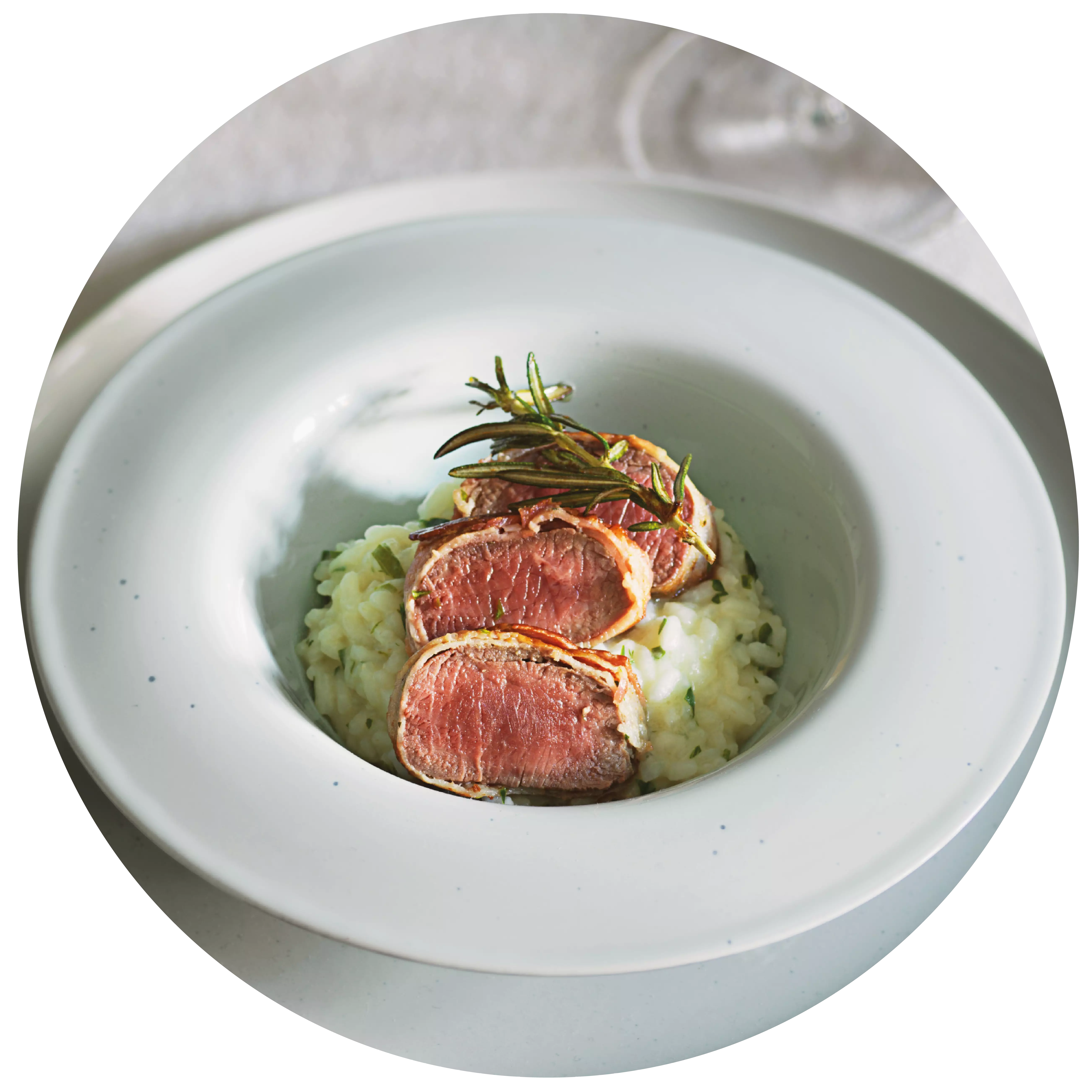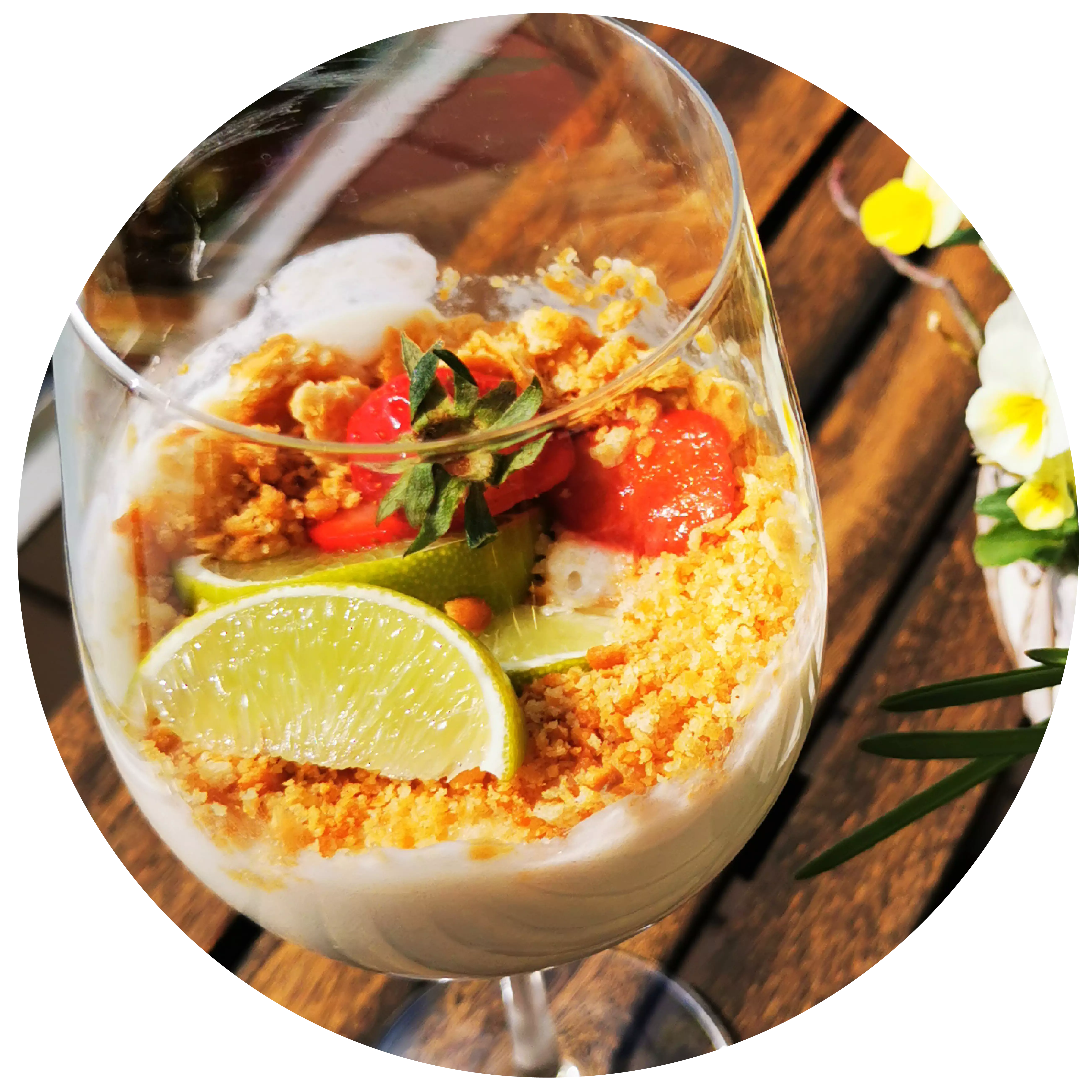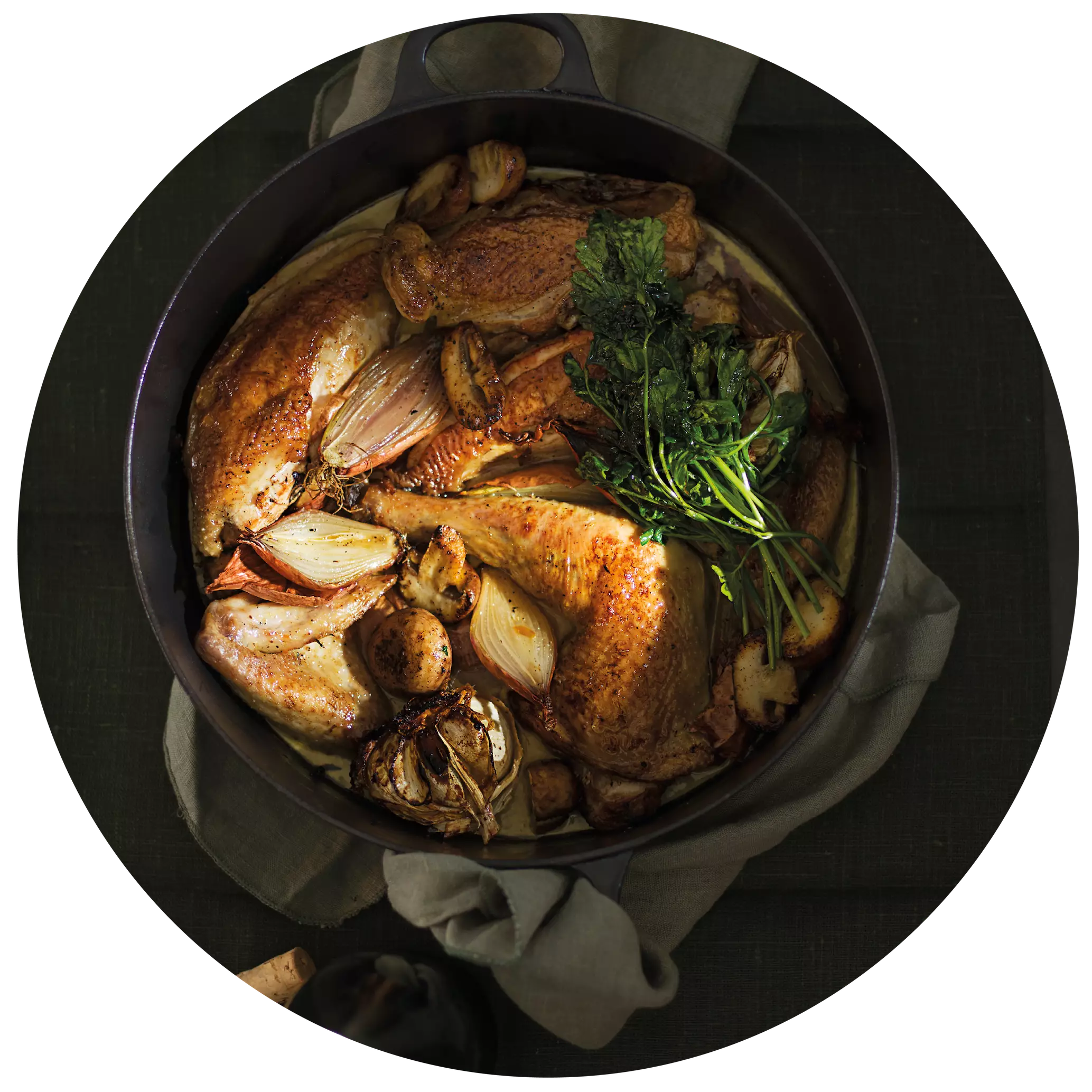Punch

Punch is a refreshing summer drink made of wine, sparkling wine and fruit or herbs. Colourful, fruity and well chilled, this fizzy classic guarantees fruity enjoyment.
Facts
-
3-5
ingredients
-
18.
century
-
50s
years
There’s really not much you can do wrong with this fruity cocktail – if you keep a few simple basic rules in mind:
- The best punches only use a couple of ingredients.
- A punch is only ever as good as the wine or sparkling wine used in its making. German quality wine, a light Kabinett and fruity Winzersekt are excellent choices.
- Only use fresh and fully ripe fruit.
- Peel and chop the fruit carefully – do not crush it.
- To get the fruit to develop its full aroma, just sugar it lightly or marinate it in grape liqueur. If you prefer a sweet punch, use sweet wines.
- Only add – well chilled – sparkling wine and mineral water just before you serve the punch. This way, you’ll keep it fizzing for that much longer.
- The ideal serving temperature for a punch is 5-8 °C, slightly cooler than for wine.
Do not add ice cubes to the punch. This will water it down. Best place the punch bowl inside a larger bowl filled with crushed ice.
And another thing: Once the punch is dwindling, do not top it up. It’s better to serve a good wine after the punch is finished.
Strawberry punch
Prepare a large plate full of fresh strawberries. Cut larger strawberries in half or quarter them. Sprinkle with sugar and let them sit for a while to release their juice. Alternatively, marinate the fruit in grape liqueur. Next, place fruit and juice in a punch bowl and let them steep in a little wine. Later, add 4-5 bottles of wine, such as well chilled rosé or Weißherbst. If possible, place the punch bowl on crushed ice. Just before serving, add a bottle of German Winzersekt and enjoy.
Peach punch
Peel 6-8 ripe peaches, cut them in half and remove the stones. Sprinkle the fruit pieces with sugar and let them steep. Next, add 3-4 bottles of wine, such as Riesling or Silvaner, and let the mixture steep for a couple of hours, preferably on ice. Just before serving, add a bottle of German Winzersekt for that zesty finishing touch.
Kumquat punch
Wash 15 kumquats in hot water, dry them and cut them into thin slices. Sprinkle with brown sugar and add a little wine, such as Pinot Gris or a mature Riesling. Let the mixture steep for a couple of hours, then top up with 2 bottles of wine and leave it to steep for some more time on ice. Just before serving, add a bottle of Winzersekt for that delightful sparkle.
How punch got its name
The German term for the refreshing summer cocktail made of wine and fruit is Bowle, derived from the English word “bowl”. Allegedly, the cocktail was invented by British colonial officers in India. To invigorate themselves and to overcome the sheer boredom of Colonial life, they got their Indian servants to create drinks for them that used at least five – or “punch” in Hindi – ingredients. Those were then served to the officers in a large “punchbowl”.
Thus the British started the fashion for punches in Europe in the 18th century. Initially reserved to nobility, drinking punch soon became a favourite pastime in bourgeois circles as well. The favourite drink of the 19th century high society later became the party craze of the 1950s. Today, the cocktail is becoming fashionable once again as an invigorating, fresh and fruity drink for the summer.
Do you know any other kind of punch than the traditional punch?
Besides the traditional punch like Cold Whisky Punch, Roman Punch, Ginger Punch,... for which spirits like brandy and whisky are used, you can also use grape wines to make a punch. How to make it? Find out in this article!
Varietals

in a bacon coating Lamb
in a bacon coating
- 4 Stück Lammlachse à 150 g
- 4 Scheiben Bacon
- 0,1 Liter Wein
- 0,3 Liter Gemüsebrühe
- 1 kleine Schalotte
- 20 Gramm Butter
- 4 EL Olivenöl
- je 2 Zweige Thymian, Rosmarin, Salbei
- nach Geschmack Salz & Pfeffer
Season the lamb salmon with pepper and massage 2 tbsp of olive oil into the meat. Finely chop the thyme, rosemary and sage and season the meat in the herbs. Marinate in the fridge for a few hours.
<p
<p>Wrap the meat with the bacon slices and sear on all sides in the remaining olive oil. Continue to cook for approx. 4 minutes on each side over a low heat (the cooking time depends on the thickness of the lamb loin - it is best to do a pressure test). Then wrap in aluminium foil and leave to rest in the oven at 80 °C – so they remain juicy and slightly pink on the inside.
This goes well with Bärlauch risotto.
- Dornfelder (trocken)

with dry sparkling wine Sparkling wine and lime dessert
with dry sparkling wine
- 300ml Winzersekt
- 4 Limetten
- 100g Zucker
- 30g Speisestärke
- 100g Butterkekse
- 50g ungesalzene Butter
- 2 Eiweiße
- 50g grieschicher Joghurt
- 150g Schlagsahne
Pour the sparkling wine and sugar into a pan. Chill the remaining sparkling wine. Wash 1 lime with hot water and finely grate the zest. Halve the lime and 2 others, squeeze out the juice and mix with the cornflour. Pour everything into the pan and bring to the boil briefly. Remove the pan from the heat and chill the cream in the fridge.
Fill the shortbread biscuits into a freezer bag, crush with a rolling pin and place in a bowl. Melt the butter in a pan, pour over the crumbled shortbread biscuits, add a pinch of salt and mix well. Leave to cool briefly, divide half into large wine glasses and press down firmly.
Cut the lime into slices. Beat the egg whites with salt until stiff. Stir the yoghurt into the chilled champagne and lime cream. Whip the cream until stiff and fold into the cooled cream, one after the other, together with the beaten egg whites. Spread half over wine glasses, add another layer of shortbread biscuits and finish with a layer of cream. Garnish with lime slices and pour in the remaining sparkling wine. Toast and enjoy!
- Riesling (trocken)
- Pinot Blanc (trocken)

with chanterelle and onion leek, served with potato and grilled cheese ragout in grilled tomato Chop of Hunsrück veal
with chanterelle and onion leek, served with potato and grilled cheese ragout in grilled tomato
- 4 x 300 Gramm Kotelettes
- 250 Gramm Pfifferlinge
- 4 große Kartoffeln
- 2 große Grilltomaten
- 180 Gramm Flammkäse
- 50 Gramm Knollensellerie
- 200 ml Spätburgunder
- 200 ml Sahne
- 50 Gramm Butterschmalz
- 2 EL Butter
- 1 EL Rapsöl
- 6 Stück Lauchzwiebeln
- 1 kleine Knoblauchzehe
- je 1 Zweig Thymian & Rosmarin
- je 1 TL Majoran & Oregano
- nach Belieben Salz & Pfeffer
Peel the potatoes, celery and garlic clove, crush the garlic and cut the potatoes and celery into small cubes. Heat the rapeseed oil in a pan, add the potato and celery cubes, sauté briefly and top up with ⅔ of the cream. Season with salt, pepper and the crushed garlic and leave to simmer for approx. 6 minutes. Add the oregano, marjoram,
add a little thyme and the diced flambé cheese and remove from the oven immediately.
Season the veal chops with pepper, fry in the pan in hot clarified butter for approx. 3 to 4 minutes on both sides and then cook in the oven at 160 degrees for 8 to 9 minutes. Then leave the meat to rest briefly.
Cut the grilled tomatoes in half, remove the skin, place on a baking tray and fill with the potato and flambé ragout. Place the baking tray in the oven with the chops for approx. 6 - 7 minutes. Add 1 tbsp of butter and the sprig of rosemary to the roasting mixture, deglaze with the Pinot Noir, reduce a little and refine with the remaining cream. Season to taste with salt and pepper.
Clean the chanterelles and spring onions. Wash the spring onions well, cut into 5 cm pieces, blanch briefly in salted water and rinse in ice water. Heat 1 tbsp butter in a pan, add the chanterelles and sauté for 2 - 3 minutes. Add the spring onions and the rest of the thyme and season with salt and pepper.
<p- Riesling (trocken)

with ribbon noodles Coq au Riesling
with ribbon noodles
- 1 ganzes Huhn
- 0,4 Liter Riesling
- 0,2 Liter Sahne
- 1 kl. Glas Cognac
- 2 Stück Schalotten
- 1 Stück Knoblauchzehe
- 1 Stück Eigelb
- 1/2 Bund Petersilie
- 1 EL Mehl
- 50 Gramm Butter
- 1 EL Olivenöl
- nach Belieben Salz & Pfeffer
Carve the chicken. Heat approx. 50 g butter with 2 tbsp olive oil in a large frying pan and fry the chicken pieces until light brown (without the lid). Season lightly with salt.
Finely chop the shallots, peel and finely chop the garlic. Chop the parsley and add everything to the meat. Sauté briefly with the pan closed. Pour the cognac over the meat and light it (flambé). Deglaze with 1/3 litre of Riesling and leave to simmer for half an hour over a low heat. If necessary, add a little more wine and simmer for a further 10 minutes.
Remove the chicken pieces and keep warm for a short time. Mix 1 tbsp of flour with 1 egg yolk and the cream and whisk into the sauce. Flavour with salt and pepper. Return the chicken pieces to the pan. Serve immediately.
This goes well with tagliatelle.
Variant:Fry 150 g fresh mushrooms in 50 g butter and add.
- Riesling (trocken)

Teaser
Events
-
Show
winetasting in our winery - cheese & wine
Mainz-Hechtsheim




